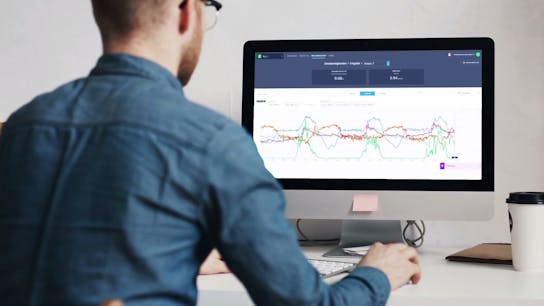We all agree: the greenhouse horticulture sector is developing at a very fast pace. Innovations in the production process help produce plants of higher quality. Many of these cultivation innovations are based on data. Data-driven cultivation is a smart way for growers to have more control over their plants. This is also true for Wilbert van Bussel, managing director at Wim Peters cultivators in Someren, the Netherlands. Wilbert is a professional and one of the first to have tested e-Gro. We walked with him through the greenhouses in Someren and asked him how he applies data in cultivation.
As a grower, what are your greatest challenges in 2019?
Wilbert holds his coffee mug and begins his argument: “In the past our company used to produce two species of tomato plants. In 2016 we started growing six different varieties. This breeds new complexities. With so many types of tomatoes next to each other you are more liable to make mistakes. How do you gain more control over the situation? We looked for a system that was capable of gathering all the available data and noticed that we could control everything in the greenhouse more efficiently,” says Wilbert.
And how does it work?
“All the information from the greenhouse, such as production data, information from sensors in the greenhouse, the variation of the different sorts of tomatoes, are collected by e-Gro. As a grower you strive for maximal production. You need to make as few mistakes as possible, for instance you don’t want to lose any growth of your plants or you want to make sure you don’t water your plants excessively. With the data we are now able to gather we can gain insights into which actions we have to take to make a difference in the greenhouse.”
What do you gain from data management?
“Trust!” Wilbert says spontaneously. “Knowing what’s going on in the greenhouse is very important for a grower and with all the data in a dashboard you feel at ease, knowing that you’ve got everything under control. It’s better to make a well-founded decision about, for instance, the correct temperature for a specific tomato variety. The more well-founded decisions you can make, the more trust you gain in the process.”
Is there anything left for the grower to do in the cultivation process?
Wilbert stops walking and picks up a tomato: “As a grower, only I have specific knowledge about the plants. I look at a plant and can determine whether it’s growing well or whether it still needs something. Based on that I can make adjustments. Technologies such as e-Gro help me to make these decisions. But I still walk around in the greenhouse.”
How do you see the future?
“The grower’s tasks have become more diverse. A grower doesn’t only cultivate his plants; he is also an energy manager and, nowadays, also a data analyst. This is an exciting development and is also demanding for the grower. But through more insights into the available data, the results in the greenhouse will eventually get better,” Wilbert smiles with satisfaction. “And this is also the future of horticulture. Data is becoming indispensible. More yield of higher quality tomatoes using fewer resources. More efficient and therefore more sustainable.”









